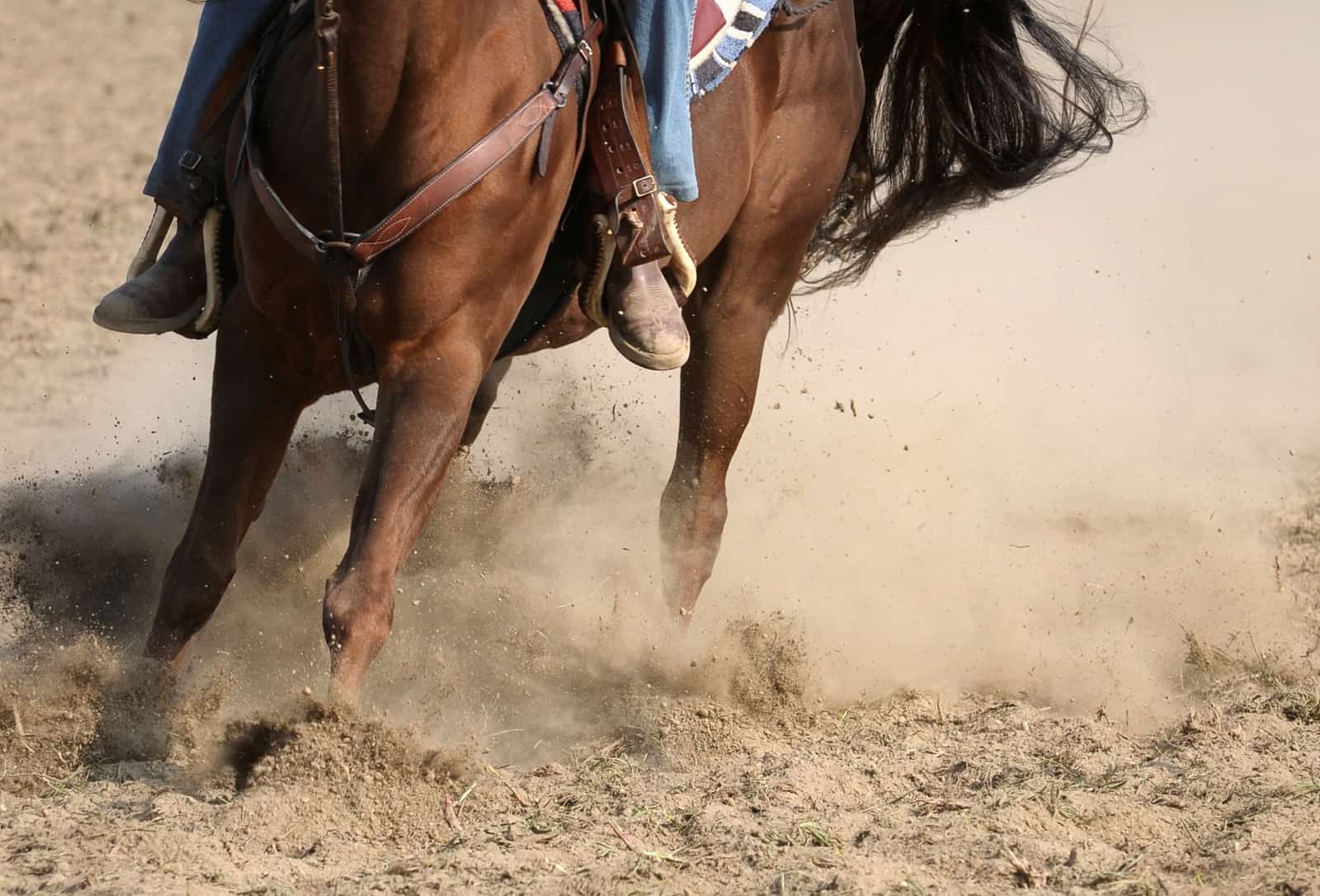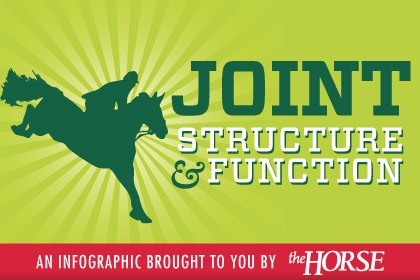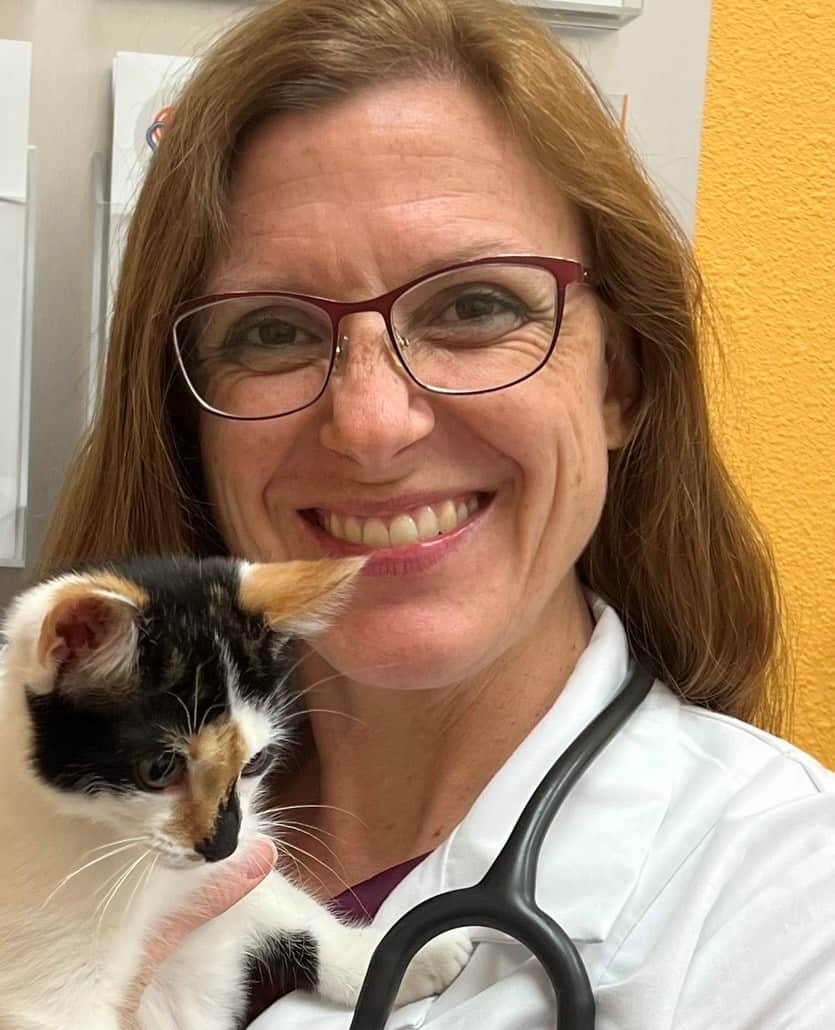Beyond Osteoarthritis: ‘Other’ Causes of Joint Disease

Early diagnosis and proper treatment of these joint problems can make the difference in whether the horse can be restored to soundness.
If you have a lame horse, you might argue with me, but I must insist: the equine musculoskeletal system is strong. This is primarily because of the large amounts of collagen found in the system’s connective tissues, such as fascia, cartilage, ligaments, tendons, and bone. Collagen is a structural protein with high tensile strength. It’s so strong, in fact, that it is comparable, weight for weight, with steel.
Alas, while strong, the horse’s musculoskeletal system is, as we are all aware, prone to injury. This is partly because the horse has been genetically selected for performance (primarily speed) from a limited number of sires. The body and large muscle groups are centrally located, perched upon long, slender bones.
An estimated 60% of lameness is caused by osteoarthritis, so that means 40% of lamenesses are caused by something else. We will look at the form and function of the equine joint, some of these “other” causes of joint disease, and how these other conditions relate to the proverbial “King of Joint Disease,” osteoarthritis (OA).

The Synovial Joint
A joint is the union of two or more bones. Of the three types of joints found in the horse’s body, the synovial (diarthroidal, or freely movable) joint is the most common type in the horse’s body. Synovial joints form where bones covered with a thin layer of articular cartilage meet. Synovial fluid, primarily produced by specialized cells in the synovial membrane lining the joint, fills the space between the bones. The entire joint is encapsulated by a fibrous capsule. Ligaments such as cruciate ligaments and menisci (discs of cartilage) can be within the joint, and ligaments surrounding the joint (such as collateral ligaments) all function together with the cartilage, bone, and synovial fluid to permit movement and transfer load between bones.
Potential Causes of Pain/Lameness
Any movable, synovial fluid-filled joint in the horse’s body can be injured. The list of joint diseases is expansive, ranging from simple, innocuous, self-limiting conditions, such as idiopathic synovitis (i.e., bog spavin), to life-threatening condylar fractures involving the fetlock joint.
No matter the joint involved, the potential causes of disease are primarily the same. However, some joints are more susceptible to certain lesions than others. For example, osteochondritis dissecans (OCD) is more likely to occur in the hock than any other joint. The most common locations (in descending order) are the distal intermediate ridge of the tibia, the lateral trochlear ridge of the talus, the medial malleolus, and the medial trochlear ridge of the talus. The stifle and fetlock can also be affected, but this happens far less frequently.
Not only can the structures located within the joint be injured, but injury can also occur to periarticular structures—those located close to, but not inside the joint, such as collateral ligaments and subchondral bone (the layer of bone lying directly below the articular cartilage).
It’s impossible to discuss all of these possible joint problems in one article. So here we will describe diseases primarily affecting the synovial membrane, to demonstrate how this single anatomic joint component can become inflamed and cause lameness via a number of mechanisms. Synovial membrane inflammation can vary from mild, nonpainful, and self-limiting to career- or life-ending, and it can negatively impact the entire joint’s overall health.
Synovitis: A Major Cause of Disease
Idiopathic synovitis
This is a chronic low-grade inflammation of the synovial membrane that is not associated with heat, pain, or radiographic changes to the joint (it’s not observable on X rays). Classic examples of idiopathic synovitis are bog spavin of the tarsocrural and tibiotarsal joints and windpuffs of the fetlock joint. Veterinarians diagnose idiopathic synovitis only when they cannot identify an underlying cause for the swelling, such as osteochondritis dissecans. The degree of lameness is variable and depends on the severity of the inflammation and amount of effusion (swelling). If the intra-articular fluid is particularly voluminous, then the synovitis can be, in certain athletic endeavors, a cosmetic issue. Experts suggest that most affected horses likely do have an underlying articular lesion that could be identified and treated if the joint was explored arthroscopically. In true cases where an underlying cause cannot be identified, idiopathic synovitis is thought to be caused by microtrauma to the articular cartilage as a result of conformation problems (e.g., being straight behind).
Acute (traumatic) synovitis
This is more serious, yet it’s another common cause of synovial membrane inflammation. Acute synovitis is often trauma-related (e.g., repeated trauma in athletic or inadequately conditioned horses) and only rarely occurs following intra-articular diagnostic analgesia or medication (joint blocks used to pinpoint lameness cause, or therapeutic joint injections). Synovitis is characterized by effusion, heat, pain, and lameness, and it occurs in joints such as the carpus (knee) and metacarpophalangeal joints (fetlock). Acute synovitis of the carpus and metacarpophalangeal joints has also been referred to as carpitis and osselets, respectively, but those are not generally viewed as the most correct or accurate terms to describe the condition.
Joint capsules of affected joints can also become inflamed. Regardless of the extent of the inflammation, treatment necessitates restoring joints to normal as quickly as possible. Rest, bandage support, hydrotherapy, non-weight-bearing physical therapy (swimming), pain management using such drugs as non-steroidal anti-inflammatory drugs (NSAIDs), and use of the free radical scavenger dimethyl sulfoxide (DMSO) are indicated.
“In most young horses the condition resolves with NSAIDs, adjustments in training, and increased fitness,” writes Dean Richardson, DVM, Dipl. ACVS, chief of surgery at the University of Pennsylvania’s New Bolton Center in his “The Metacarpophalangeal Joint” chapter of Diagnosis and Lameness in the Horse (Mike W. Ross and Sue J. Dyson, Saunders, New York, 2003).
Richardson also describes the use of intra-articular hyaluronan in mild to moderate cases and a combination of intra- articular hyaluronan and corticosteroid for a most consistently effective approach. He notes other therapies worthy of consideration, including oral glucosamine with or without chondroitin sulfate, intramuscular polysulfated glycosaminoglycans (PSGAG), or intravenous hyaluronan.
“Acute synovitis is a common condition that veterinarians treat and essentially all joint medications should be considered,” adds C. Wayne McIlwraith, BVSc, PhD, DSc, FRCVS, Dipl. ACVS, ACVSMR, Barbara Cox Anthony University Chair and University Distinguished Professor in Orthopaedics and founding director of the Orthopaedic Research Center at Colorado State University.
Some advanced or resistant synovitis cases could require joint lavage and even a synovectomy (surgical removal of part of the synovial membrane), usually performed under general anesthesia.
Chronic proliferative synovitis
This is historically referred to as villonodular synovitis. Villonodular synovitis occurs in the metacarpophalangeal joint and, like many joint diseases, appears to be trauma-related. Specifically, repeated trauma to the dorsal aspect (front) of the fetlock due to extreme extension of the joint causes inflammation and scarring of the synovial pad at this location. This dense, fibrous connective tissue can become extremely thick, and in extreme cases the clinician can easily see it when looking at the joint in profile. Secondary to continual inflammation, the articular cartilage and cortical bone (the hard outer layer of bone) underlying the mass erode.
Surgery is indicated in affected horses to remove the errant synovial pad, and intra-articular medication is generally required thereafter. This synovitis might sound relatively serious, but the outcome is typically good if the condition is caught in its early stages: return to function can be within six to eight weeks post-surgery.
“Other” Joint Disease Causes
- Luxations (displacement, misalignment);
- Soft tissue injuries of tendons, ligaments, tendon sheaths, bursae, and other periarticular tissues (those around a joint);
- Subchondral bone cysts;
- Osteochondritis dissecans (OCD);
- Chronic proliferative synovitis (villonodular synovitis);
- Synovial hernias, ganglia, or fistulas; and
- Synovitis and capsulitis.
—Stacey Oke, DVM, MSc
Iatrogenic acute or chronic synovitis
In addition to the described joint disease etiologies, equine surgeon Barrie Grant, DVM, Dipl. ACVS, suggests considering iatrogenic (caused by a clinician) synovitis.
“Horses can react acutely to intra-articular medications (reactions to steroid crystals after injection, also known as a “joint flare”), and most everyone is familiar with that syndrome, but they should also keep in mind that there are many off-label uses of medications that go into joints (xylazine, sarapin, medical-grade silicone) that can all result in both acute and chronic synovitis,” advises Grant. “For protection, the history taking should always be proactive in obtaining any previous therapies or the possibility of previous therapy (i.e., a horse that was just claimed or purchased, or a horse that becomes lame shortly after transfer of care).”
According to Grant, for legal protection vets should demand full disclosure of all previous medical history when performing a prepurchase exam.
“It is not a game to see if you can outsmart another veterinarian,” says Grant.
Infectious Arthritis
Infected joints are characterized by rapid onset of heat, pain, swelling, and the development of a severe and/or non-weight-bearing lameness (equivalent to a fracture).
Joint infections, caused by the invasion of synovial structures by bacteria and/or their toxins, are major performance- limiting and life-threatening conditions that can occur in one of three ways:
- Hematogenous spread (via the bloodstream). This occurs primarily in foals, particularly preemies with high sepsis scores (sepsis being infection in the bloodstream) or multisystemic disease;
- Wound occurrence either directly into or close to the joint; and
- Iatrogenic inoculation during a joint injection or surgery.
“In adult horses, wounds are the leading cause of infectious arthritis,” says Tim Mair, BVSc, PhD, DEIM, DESTS, Dipl. ECEIM, MRCVS, of the Bell Equine Veterinary Clinic, in the U.K. “While the synovial membrane is highly specialized and able to prevent or control the proliferation and colonization of infective microorganisms, sometimes the invading bacterium can over-come these natural defenses.
“Secondary to infection of a synovial joint with bacteria, there is articular cartilage degeneration, decreased blood flow to the synovium, and formation of fibrin and adhesions within the joint,” adds Mair.
Performing bacterial cultures of the synovial fluid is a key diagnostic technique, and veterinarians can use the results to advise owners regarding both short- and long-term prognoses, reports Mair and colleagues in a study published in the Equine Veterinary Journal.
According to Mair, “As we hypothesized, horses with positive bacterial cultures from a septic joint have a poorer prognosis for survival to the time of discharge from the hospital and have a poorer long-term chance of returning to function than horses with suspected infections that had no bacterial growth in their cultures.”
It is important to note that lack of a positive culture does not necessarily mean the joint is not infected; there are multiple reasons why sampling a joint that is actually infected might garner a negative culture.
“For example, (a negative culture might result because) bacteria can be sequestered by the synovial membrane, and due to the natural bactericidal qualities of the synovial fluid,” advises Mair.
While bacterial culture outcome can be important, deciding if, how, and when to manage cases with infected joints should not hinge on these results.
“Treatment should be instituted immediately and is likely to include antimicrobial therapy—either systemic and/or locally at the site of infection—surgical lavage and drainage, and debridement of the affected joint,” says Mair.
The Vicious Circle: OA Development
“The joint is an organ,” says McIlwraith. “This means that while it is possible to define and describe diseases of particular parts of the joint in isolation, damage or disease initially affecting an isolated structure—such as the synovial membrane—can rapidly result in widespread damage and disease throughout the entire joint.”
In the case of synovitis, for example, if identified early, it likely can be managed medically via intra-articular medication and altered training. If a diagnosis and/or treatment are not prudently initiated, then the outcome will not be as successful. This is because instead of only dealing with one problem (i.e., inflammation), the entire joint and articular surface will also likely be diseased as well (OA could develop).
Unlike the inciting disease—synovitis—there is no cure for OA, and response to treatment is highly variable.
“Swift diagnosis and treatment of primary joint problems is imperative to minimize the development of OA,” he advises.
Take-Home Message
There is more to joint lameness than osteoarthritis, but owners and veterinarians might have to deal with those conditions as well as OA.
Early diagnosis and proper treatment of these joint problems can make the difference in whether a horse can be restored to soundness, or if he will end up permanently disabled.

Written by:
Stacey Oke, DVM, MSc
Related Articles
Stay on top of the most recent Horse Health news with















